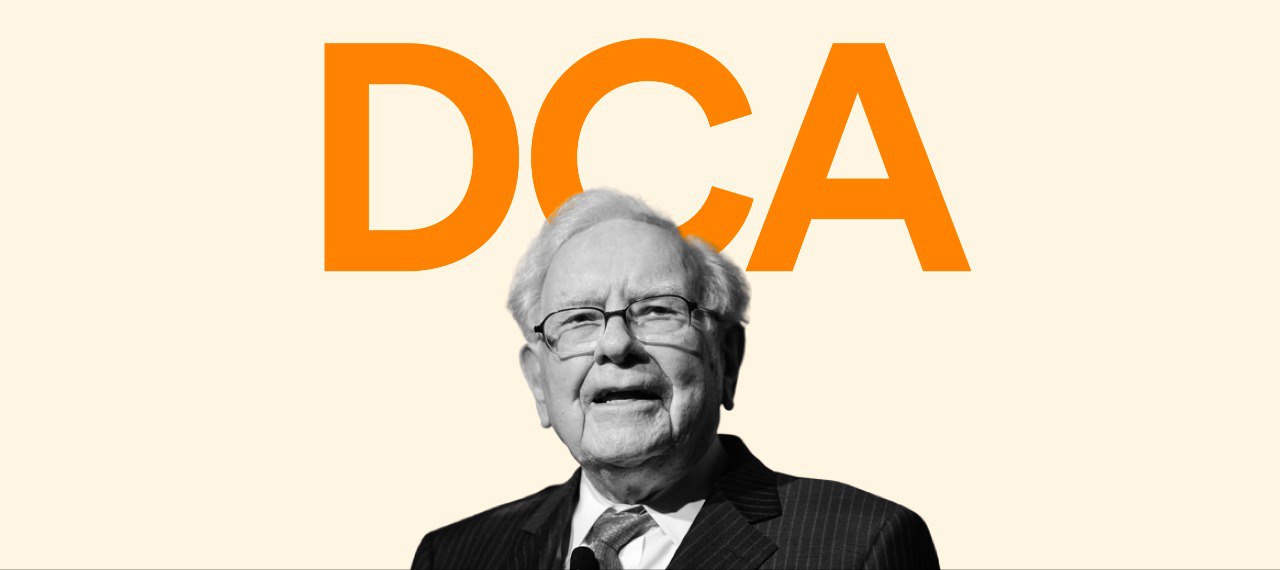A simple guide for understanding dollar-cost averaging (DCA)
Dollar-cost-averaging (DCA) is an investment strategy where you buy the same dollar amount of a particular asset at regular intervals over a period of time. For example, buying $5 worth of Bitcoin weekly for three years is dollar-cost averaging.
With dollar-cost-averaging, if you have $1,000 to invest in Tesla stock, you wouldn’t invest it at once. Instead, you can buy $20 of it daily until the money finishes. This strategy helps you minimize your risk by spreading your purchase across a range of price points, and you get the average price for that period.
Why is it important?
No one knows the right time to buy an asset. Not you, not me, not even the expert investors. However, renowned investors like Warren Buffet use the dollar-cost averaging strategy to invest for the long term while minimizing their risk.
Of course, prices fluctuate; however, spreading your purchase increases your probability of buying at a lower average price. Additionally, dollar-cost-averaging enables you to consistently put your money to work, which is essential for long-term investment success.
Here’s what would have happened if you had bought $1 worth of Bitcoin every day since 2018

Timing The Market
Some people would rather ‘Buy the Dip’ because they think it will always put them in the right position when the market swings. However, this is often not the case — today’s dip might become tomorrow’s high. In the long run, prices of solid assets will always rise. However, in the short term, they may go through different cycles.
No one is smart enough to always time the market accurately, so there’s no need to try.
You can only determine what advantageous prices would have been for any given asset in retrospect, and by that time, it is too late to make a purchase. When you try to time your asset purchase by waiting on the sidelines, you typically buy at a price that has plateaued after the asset has already experienced significant gains.
Furthermore, attempting to time the market can be very costly. Charles Schwab found that investors who tried to time the market made far less money than those who invested regularly using dollar-cost-averaging.
People who should use DCA
- Risk-averse investors: DCA reduces the amount of risk on your investment, so it’s the top choice for conservative investors who want to reduce the amount of risk on their investment. Investments generally come with a level of risk; however, risks can always be reduced. With DCA, investors can do this effectively.
- Long-term investors: Long-term investors like Warren Buffet use dollar-cost-averaging to get the best out of their investment. DCA is a crucial strategy for long-term investors to build wealth in solid assets. The market has different cycles in the short term, but solid assets always rise in the long term.
- Beginner investors: Given the straightforward nature of dollar-cost averaging, it is the best introduction to investment for beginners. New investors are often risk-averse, so DCA helps them with a smooth entry into building long-term wealth.
Lump-sum investing vs Dollar-cost-averaging (DCA)
While DCA helps you reduce your risk by investing a fixed amount of money at regular intervals over a period of time, lump-sum exposes you to more risk when you invest your money all at once.
Lump-sum example: You have $1000 to invest in Tesla stocks, and you invest it all at once.
DCA: You have $1000 to invest in Tesla stocks, and you invest $10 every day for 100 days.
| Dollar-cost Averaging | Lump-sum |
| Investing the same amount of money on a regular basis, regardless of market conditions. | Investing your money all at once |
| You have $1000 to invest in Tesla stocks and you invest $10 every day for 100 days. | You have $1000 to invest in Tesla stocks, and you invest it all at once |
| Minimizes your overall market risk by spreading investments over a longer period | Exposing all of your money to market risks |
| Helps you build long-term wealth | Doesn’t have a significant impact on helping you build long-term wealth |
A more detailed example of the difference between lump-sum and DCA
Zino has $2000 to invest in an ETF. Here’s a breakdown of what the investment will look like using both methods
Lump-sum (invest all of your money at once)
| Month | Amount Invested | ETF Share Price | Total Shares Bought |
| 1 | $2,000 | $200 | 10 |
| Total | $2,000 | $200 (average) | 10 |
Dollar-cost averaging (DCA)
| Month | Amount Invested | ETF Share Price | Total Shares Bought |
| 1 | $200 | $200 | 1 |
| 2 | $200 | $140 | 1.43 |
| 3 | $200 | $220 | 0.91 |
| 4 | $200 | $180 | 1.1 |
| 5 | $200 | $170 | 1.18 |
| 6 | $200 | $210 | 1.1 |
| 7 | $200 | $190 | 1.05 |
| 8 | $200 | $200 | 1 |
| 9 | $200 | $165 | 1.2 |
| 10 | $200 | $140 | 1.43 |
| Total | $2,000 | $181.5( average buy price) | 11.4 |
